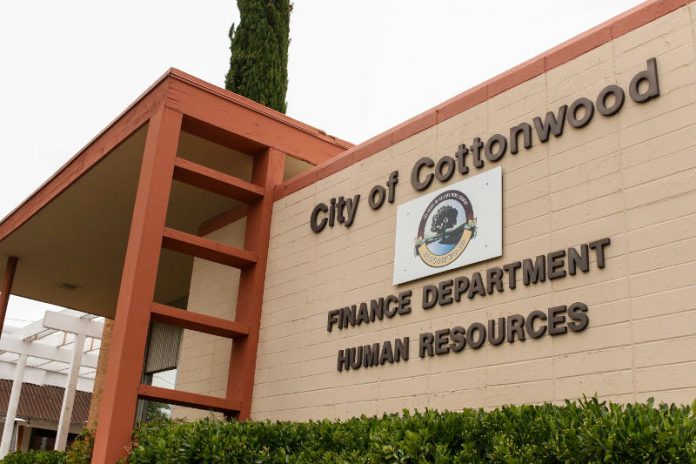Each year, the cities and towns of the Verde Valley approve budgets that are, generally speaking, optimistic.
The reason for this is that Arizona has enacted transparency laws requiring cities and municipalities to account for all potential revenues and expenditures.
Accounting for this presents challenges and can confuse the taxpayer, however. An optimistic budget, which is sometimes tens of millions of dollars more than the audited budget, can make it appear as though municipal governments have both more money coming in and more money going out than is actually the case. In order to have the budget authority to spend funds that may or may not come in, including projects that are years in the execution, neighboring Cottonwood and Clarkdale have for years approved budgets that are close to, or more than, twice what is audited after the fiscal year’s end:
Cottonwood
- 2011-12: $63,260,685 approved vs. $35,650,585 audited
- 2012-13: $54,231,275 vs. $35,445,309
- 2013-14: $57,895,580 vs. $34,486,403
- 2014-15: $76,488,750 vs. $40,271,996
- 2015-16: $73,877,055 vs. $36,583,044
Clarkdale
- 2011-12: $30,428,000 vs. $8,068,000
- 2012-13: $27,182,000 vs. $12,234,000
- 2013-14: $20,307,000 vs. $6,936,000
- 2014-15: $17,359,000 vs. $5,437,000
- 2015-16: $16,720,000 vs. $8,486,000
The disparity is admittedly large, even more so when original budgets — which city of Cottonwood Administrative Services General Manager Rudy Rodriguez called “wish lists,” revealing what departments would ideally like to have in their coffers and what they would like to spend those funds on — are taken into account.
Using 2016’s budget, which began as an original budget of over $117 million, Rodriguez explained why the vast disparity exists.
“What makes it difficult to explain is that some numbers go up and others go down. Let’s take Special Revenues,” Rodriguez said, showing the original budgeted amount of $14,067,165 and contrasting it to the City Council approved budgeted amount of $5,387,275.
Part of those revenues were budgeted toward street construction — $6,810,370 in the original budget, reduced to $1,103,020 in the approved.
“We planned on the full reconstruction of Mingus Avenue in 2016 from Willard to 10th Street,” Rodriguez said. “There were some issues that delayed the project so only $278,000 of the budgeted $6.4 million was expected to be used by revision time. At the same time, we planned on only $337,000 to complete the 12th Street project and that number rose to $677,000 to complete.”
Using an example from enterprise funds, Rodriguez showed that in 2016 the city budgeted $14,739,405, most of which would be for planned construction on one project. By year’s end, however, the figure had changed to a mere $4,907,300.
For 2017, the city budgeted $13,686,425 for enterprise fund projects.
“In fiscal year 2016, we budgeted to spend $12.8 million on construction of the Riverfront Reclamation plant and during the fiscal year 2017 planning we realized that we would only use about
$3 million in 2016,” Rodriguez said. “We then re-estimated the costs that might be needed in fiscal year 2017 and budgeted that amount.”
Likewise, $2,100,000 was budgeted for airport construction in 2016. By the time the budget was approved, this was reduced to $113,000.
“We planned on completing the entire pavement preservation of the runway at the airport, using an Arizona Department of Transportation aviation grant,” Rodriguez said. “However, only $113,000 of the $1.95 million was actually planned to be spent by revision time.
“These same type of revisions happen when the actual numbers are produced and audited. Remember that the budget numbers are compiled and presented up to six months before the beginning of the fiscal year, the revised numbers are compiled and presented with about three months of data into the fiscal year and the actual number are compiled and presented well after the close of the fiscal year.”
According to Rodriguez, repeated or rolled over projects such as the airport pavement preservation may “carry their funding with them over the same years …. the pavement preservation project at the airport will carry its grant money into the following fiscal year in order to complete the project.”
Regarding grant funds, Rodriguez said, “Locating some grants will not take much time, such as the Governor’s Office of Highway Safety grants which are available from year to year and we have been very successful to obtain.
“Others such as grants for personnel are much more difficult to obtain. However, we will budget for them and try to get them. These usually take more time due to the necessary justification and the reporting. All in all, if our department feels that they may be able to get a grant, we provide the necessary budget authority. We also allocate $500,000 every year in our Other Grants Fund in case we find a grant we may have overlooked but were able to obtain.”
Town of Clarkdale Finance Director Kathy Bainbridge lamented the fact that state law makes budgets difficult to not only construct but to understand: “They make you inflate your budget to accept any funds that come in …. It skews the budget you’re adapting and it’s very confusing, but those are the Arizona rules. It’s hard to get a handle on that.
“I look at it myself and think, if someone was looking years ago when the budget was $5 to $6 million more, they’d say, ‘What in the world does Clarkdale do with a $25 million budget?’”
Budgeting for contingencies, Bainbridge said, sometimes comes down to a philosophical difference in the way city and town councils, city and town managers and different departments operate. Plan too conservatively, and municipalities risk losing funds that may have been allocated.
“I don’t think that anyone, in any community, wants to over budget,” Bainbridge said, but added that potential development — such as that which is occurring in Cottonwood, with the Vineyards at Cottonwood breaking ground this month — makes cities allocate additional development-related revenue.
“When there’s a big development happening, you’re going to see that in the budget so that you can get reimbursed.”
Even Sedona, which generally produces original, revised and actual budgets that are closer figures, has the occasional year in which funds don’t come in as expected.
“My preliminary research suggests that the city has had three years since 2005 where the disparity between the budgeted capital fund and the year-end capital expenditures is between $7 million and $17 million,” Sedona City Manager Justin Clifton said. “We budget for a number of projects, not knowing if the council will really want to pursue them. This may seem awkward, but it is better than the alternative of determining we need to complete a project, we have the money available but our spending ceiling is too low and we have to wait for a future fiscal year.”



